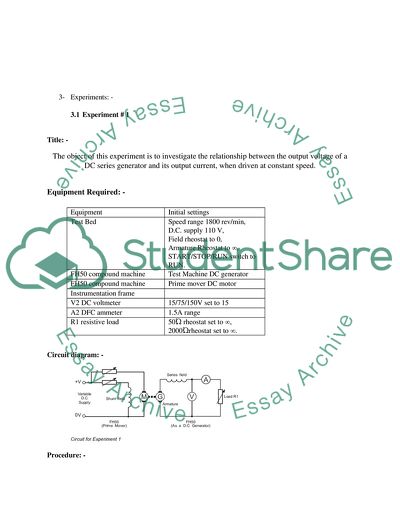Cite this document
(Operating Characteristics of DC-AC Generators and Motors Assignment - 1, n.d.)
Operating Characteristics of DC-AC Generators and Motors Assignment - 1. https://studentshare.org/technology/1745426-an-investigation-into-operating-characteristics-of-dc-ac-three-phase-generators-and-motors
Operating Characteristics of DC-AC Generators and Motors Assignment - 1. https://studentshare.org/technology/1745426-an-investigation-into-operating-characteristics-of-dc-ac-three-phase-generators-and-motors
(Operating Characteristics of DC-AC Generators and Motors Assignment - 1)
Operating Characteristics of DC-AC Generators and Motors Assignment - 1. https://studentshare.org/technology/1745426-an-investigation-into-operating-characteristics-of-dc-ac-three-phase-generators-and-motors.
Operating Characteristics of DC-AC Generators and Motors Assignment - 1. https://studentshare.org/technology/1745426-an-investigation-into-operating-characteristics-of-dc-ac-three-phase-generators-and-motors.
“Operating Characteristics of DC-AC Generators and Motors Assignment - 1”. https://studentshare.org/technology/1745426-an-investigation-into-operating-characteristics-of-dc-ac-three-phase-generators-and-motors.


